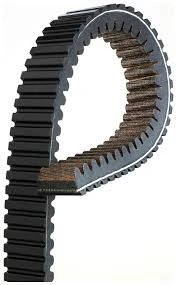- Arabic
- French
- Russian
- Spanish
- Portuguese
- Turkish
- Armenian
- English
- Albanian
- Amharic
- Azerbaijani
- Basque
- Belarusian
- Bengali
- Bosnian
- Bulgarian
- Catalan
- Cebuano
- Corsican
- Croatian
- Czech
- Danish
- Dutch
- Afrikaans
- Esperanto
- Estonian
- Finnish
- Frisian
- Galician
- Georgian
- German
- Greek
- Gujarati
- Haitian Creole
- hausa
- hawaiian
- Hebrew
- Hindi
- Miao
- Hungarian
- Icelandic
- igbo
- Indonesian
- irish
- Italian
- Japanese
- Javanese
- Kannada
- kazakh
- Khmer
- Rwandese
- Korean
- Kurdish
- Kyrgyz
- Lao
- Latin
- Latvian
- Lithuanian
- Luxembourgish
- Macedonian
- Malgashi
- Malay
- Malayalam
- Maltese
- Maori
- Marathi
- Mongolian
- Myanmar
- Nepali
- Norwegian
- Norwegian
- Occitan
- Pashto
- Persian
- Polish
- Punjabi
- Romanian
- Samoan
- Scottish Gaelic
- Serbian
- Sesotho
- Shona
- Sindhi
- Sinhala
- Slovak
- Slovenian
- Somali
- Sundanese
- Swahili
- Swedish
- Tagalog
- Tajik
- Tamil
- Tatar
- Telugu
- Thai
- Turkmen
- Ukrainian
- Urdu
- Uighur
- Uzbek
- Vietnamese
- Welsh
- Bantu
- Yiddish
- Yoruba
- Zulu
Aug . 14, 2024 00:15 Back to list
Understanding the Importance of Timing Belts in OEM Applications for Automotive Performance and Reliability
Understanding Timing Belt OEM Importance and Best Practices
The timing belt is a crucial component of an engine, designed to synchronize the rotation of the crankshaft and camshaft. This synchronization ensures that the engine’s valves open and close at the proper times during each cylinder’s intake and exhaust strokes. Timing belts are typically made of reinforced rubber, often featuring fibers such as nylon and Kevlar for added strength and durability. Given their significant role in engine performance and functionality, the sourcing of timing belts from Original Equipment Manufacturers (OEM) is paramount.
Why Choose OEM Timing Belts?
1. Quality Assurance OEM timing belts are manufactured to meet the specific standards set by the original vehicle manufacturers. This ensures that each belt is designed for optimal performance and longevity, mirroring the specifications of the vehicle’s original components. By using OEM parts, vehicle owners can trust that the timing belt will function effectively and fit perfectly within the designated engine system.
2. Compatibility One of the major advantages of selecting OEM timing belts is their guaranteed compatibility with the vehicle’s engine. Non-OEM or aftermarket belts may not align correctly, leading to misfitting components and potential engine failure. OEM parts are engineered with the specific vehicle make and model in mind, resulting in an optimal fit that sustains engine integrity.
3. Warranty Coverage OEM timing belts often come with warranties, providing consumers with added peace of mind. If an OEM timing belt fails prematurely, the warranty can cover the cost of replacement, which is not typically offered with aftermarket options.
4. Reliable Performance Performance is critical, especially in high-stress conditions. OEM timing belts are built to endure the rigorous demands of engine operation, providing reliable service over time. This reliability reduces the risk of breakdowns and enhances overall vehicle performance.
timing belt oem

Maintenance and Replacement Recommendations
Timing belts are not designed to last indefinitely. It’s crucial for vehicle owners to adhere to the manufacturer’s recommendations regarding inspection and replacement intervals. Most manufacturers suggest replacing the timing belt every 60,000 to 100,000 miles. However, this can vary based on the vehicle's make, model, and usage conditions.
1. Regular Inspections Regularly inspecting the timing belt for signs of wear, such as cracks, fraying, or glazing, can preemptively identify potential issues. It’s recommended to check the timing belt during routine maintenance intervals.
2. Professional Installation While DIY maintenance is increasingly popular among vehicle enthusiasts, installing a timing belt is a complex process that should ideally be handled by a qualified mechanic. Incorrect installation can lead to severe engine damage, making professional assistance a wise choice.
3. Consider Auxiliary Components When replacing a timing belt, it’s advisable to consider replacing associated components, such as the water pump and tensioners. These parts often share the same lifespan as the timing belt and replacing them concurrently can prevent future issues and save on labor costs down the line.
Conclusion
In conclusion, the importance of selecting OEM timing belts cannot be overstated. They offer quality, compatibility, and reliability, ensuring that the engine operates as intended. Regular maintenance and adherence to replacement schedules will enhance the performance and longevity of your vehicle. By investing in OEM timing belts and following best practices for installation and maintenance, vehicle owners can ensure their engines run smoothly and efficiently for years to come.
-
Upgrade Power Steering Pump Belt for Smooth, Quiet Operation
NewsAug.27,2025
-
Precision Timing Belt & Chain: Engine Performance & Durability
NewsAug.26,2025
-
Precision Lathe Drive Belts: Durable & Reliable Performance
NewsAug.25,2025
-
84.5 Serpentine Belt: Durable & Precision Fit for Your Engine
NewsAug.24,2025
-
Premium Ribbed Drive Belts for Quiet Power Transmission
NewsAug.23,2025
-
High-Performance Vehicle Timing Belt for Engine Precision
NewsAug.22,2025

